Related Research Articles

Physics is the natural science of matter, involving the study of matter, its fundamental constituents, its motion and behavior through space and time, and the related entities of energy and force. Physics is one of the most fundamental scientific disciplines, with its main goal being to understand how the universe behaves. A scientist who specializes in the field of physics is called a physicist.
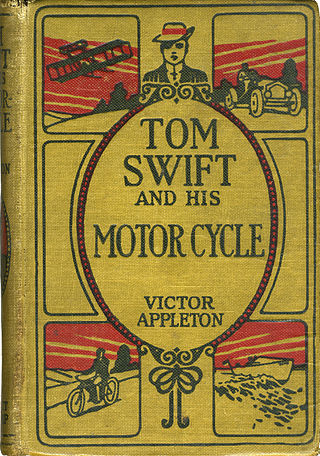
Tom Swift is the main character of six series of American juvenile science fiction and adventure novels that emphasize science, invention, and technology. Inaugurated in 1910, the sequence of series comprises more than 100 volumes. The first Tom Swift – later, Tom Swift Sr. – was created by Edward Stratemeyer, the founder of the Stratemeyer Syndicate, a book packaging firm. Tom's adventures have been written by various ghostwriters, beginning with Howard Garis. Most of the books are credited to the collective pseudonym "Victor Appleton". The 33 volumes of the second series use the pseudonym Victor Appleton II for the author. For this series, and some later ones, the main character is "Tom Swift Jr." New titles have been published again from 2019 after a gap of about ten years, roughly the time that has passed before every resumption. Most of the series emphasized Tom's inventions. The books generally describe the effects of science and technology as wholly beneficial, and the role of the inventor in society as admirable and heroic.
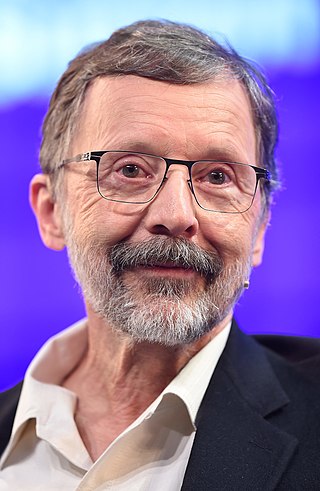
Edwin Earl "Ed" Catmull is an American computer scientist who is the co-founder of Pixar and was the President of Walt Disney Animation Studios. He has been honored for his contributions to 3D computer graphics, including the 2019 ACM Turing Award.

The Core is a 2003 American science fiction disaster film directed by Jon Amiel and starring Aaron Eckhart, Hilary Swank, Delroy Lindo, Stanley Tucci, D. J. Qualls, Richard Jenkins, Tcheky Karyo, Bruce Greenwood, and Alfre Woodard.

Kip Stephen Thorne is an American theoretical physicist known for his contributions in gravitational physics and astrophysics. A longtime friend and colleague of Stephen Hawking and Carl Sagan, he was the Richard P. Feynman Professor of Theoretical Physics at the California Institute of Technology (Caltech) until 2009 and speaks of the astrophysical implications of general theory of relativity. He continues to do scientific research and scientific consulting, most notably for the Christopher Nolan film Interstellar. Thorne was awarded the 2017 Nobel Prize in Physics along with Rainer Weiss and Barry C. Barish "for decisive contributions to the LIGO detector and the observation of gravitational waves".

Michio Kaku is an American theoretical physicist, futurist, and popularizer of science. He is a professor of theoretical physics in the City College of New York and CUNY Graduate Center. Kaku is the author of several books about physics and related topics and has made frequent appearances on radio, television, and film. He is also a regular contributor to his own blog, as well as other popular media outlets. For his efforts to bridge science and science fiction, he is a 2021 Sir Arthur Clarke Lifetime Achievement Awardee.
Quantum foam or spacetime foam is a theoretical quantum fluctuation of spacetime on very small scales due to quantum mechanics. The theory predicts that at these small scales, particles of matter and antimatter are constantly created and destroyed. These subatomic objects are called virtual particles. The idea was devised by John Wheeler in 1955.
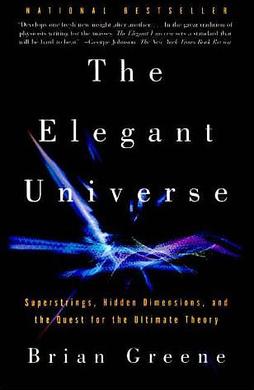
The Elegant Universe: Superstrings, Hidden Dimensions, and the Quest for the Ultimate Theory is a book by Brian Greene published in 1999, which introduces string and superstring theory, and provides a comprehensive though non-technical assessment of the theory and some of its shortcomings. In 2000, it won the Royal Society Prize for Science Books and was a finalist for the Pulitzer Prize for General Non-Fiction. A new edition was released in 2003, with an updated preface.

William Daniel Phillips is an American physicist. He shared the Nobel Prize in Physics, in 1997, with Steven Chu and Claude Cohen-Tannoudji.
Quantum mysticism, sometimes referred pejoratively to as quantum quackery or quantum woo, is a set of metaphysical beliefs and associated practices that seek to relate consciousness, intelligence, spirituality, or mystical worldviews to the ideas of quantum mechanics and its interpretations. Quantum mysticism is criticized by non-believers with expert knowledge of quantum mechanics to be pseudoscience or quackery.

Richard Lawrence Garwin is an American physicist, best known as the author of the first hydrogen bomb design.

When Worlds Collide is a 1951 American science fiction disaster film released by Paramount Pictures. It was produced by George Pal, directed by Rudolph Maté, and stars Richard Derr, Barbara Rush, Peter Hansen, and John Hoyt. The film is based on the 1933 science fiction novel of the same name, co-written by Edwin Balmer and Philip Wylie.
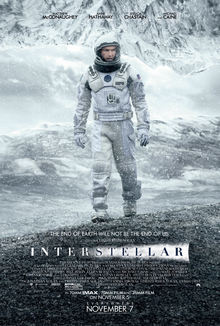
Interstellar is a 2014 epic science fiction film co-written, directed, and produced by Christopher Nolan. It stars Matthew McConaughey, Anne Hathaway, Jessica Chastain, Bill Irwin, Ellen Burstyn, Matt Damon, and Michael Caine. Set in a dystopian future where humanity is struggling to survive, the film follows a group of astronauts who travel through a wormhole near Saturn in search of a new home for mankind.
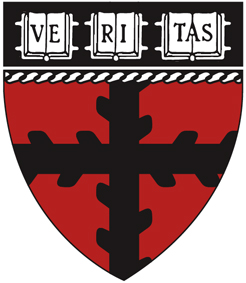
The Harvard John A. Paulson School of Engineering and Applied Sciences (SEAS) is the engineering school within Harvard University's Faculty of Arts and Sciences, offering degrees in engineering and applied sciences to graduate students admitted directly to SEAS, and to undergraduates admitted first to Harvard College. Previously the Lawrence Scientific School and then the Division of Engineering and Applied Sciences, the Paulson School assumed its current structure in 2007. Francis J. Doyle III has been its dean since 2015.

The Science & Entertainment Exchange is a program run and developed by the United States National Academy of Sciences (NAS) to increase public awareness, knowledge, and understanding of science and advanced science technology through its representation in television, film, and other media. It serves as a pro-science movement with the main goal of re-cultivating how science and scientists truly are in order to rid the public of false perceptions on these topics. The Exchange provides entertainment industry professionals with access to credible and knowledgeable scientists and engineers who help to encourage and create effective representations of science and scientists in the media, whether it be on television, in films, plays, etc. The Exchange also helps the science community understand the needs and requirements of the entertainment industry, while making sure science is conveyed in a correct and positive manner to the target audience.
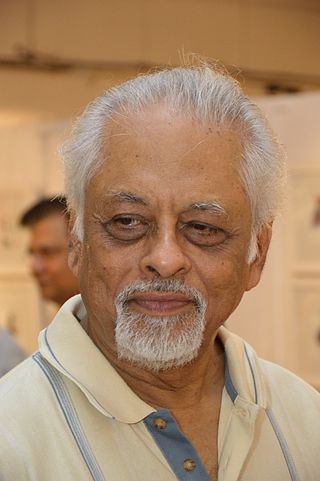
Partha GhoseFNASc is an Indian physicist, author, philosopher, musician and former professor at the S.N. Bose National Centre for Basic Sciences in Kolkata. He is the former Chairman of Satyajit Ray Film and Television Institute, Kolkata and a member of the Board of Trustees of the Academy of Fine Arts, Kolkata.
Arthur I. Miller is Emeritus Professor of History and Philosophy of Science at University College London. He took a PhD in physics at the Massachusetts Institute of Technology. From 1991 to 2005 he was Professor of History and Philosophy of Science at University College London (UCL). At UCL, Professor Miller helped restructure an academic unit combining history and philosophy of science, sociology of science, and science communication to create UCL Department of Science and Technology Studies, renamed in 1994. He was instrumental in developing the UK's first undergraduate single honours BSc degree in History and Philosophy of Science, at UCL, launched in 1993.
Dominique Langevin is a French researcher in physical chemistry. She is research director at the Centre national de la recherche scientifique and leads the liquid interface group in the Laboratory of Solid State Physics at the University of Paris-Sud. She was the Life and Physical Sciences Panel chair for the European Space Sciences Committee of the European Science Foundation from 2013-2021.

David Allen Kirby is an American professor of science communication studies within University of Manchester's Centre for the History of Science, Technology and Medicine. He researches, writes about, and teaches science communication and the history of science. He is best known for his work showing how fictional narratives can be used in the process of design and for his studies on the use of scientists as consultants for Hollywood film productions.
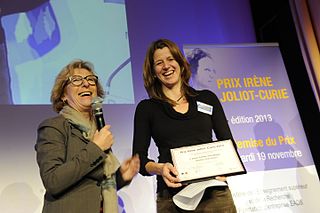
Wiebke Drenckhan, born 6 April 1977 in Bad Belzig, is a German physicist. She is a CNRS research director at the Institut Charles Sadron, where she investigates the physics and physical chemistry of liquid and solid foams and emulsions. She also works as illustrator for scientific journals and popular science books and she collaborates regularly with artists and designers.
References
- ↑ "Sidney Perkowitz". Emory University. Archived from the original on 15 October 2012. Retrieved 6 June 2012.
- ↑ "Roster of Fellows" (PDF). American Association for the Advancement of Science. Archived from the original (PDF) on 6 February 2012. Retrieved 6 June 2012.
- ↑ Perkowitz, Sidney (May–June 1991). "True Colors: Why Things Look the Way They Do". The Sciences: 22–28. doi:10.1002/j.2326-1951.1991.tb02304.x.
- ↑ "Brother Can You Spare a Cyclotron". Technology Review.
- ↑ Perkowitz, Sidney (1997-07-20). "Light Reading". Los Angeles Times. Retrieved 6 June 2012.
- ↑ Perkowitz, Sidney (March 3, 1991). "The War Science Waged". Washington Post.
- ↑ "Sidney Perkowitz: Contributions to Encyclopædia Britannica". Encyclopædia Britannica. Retrieved 6 June 2012.
- ↑ "Big Screen Science". Living on Earth. Retrieved 6 June 2012.
- ↑ "Three films that would make Einstein blush". 2010-02-23. Retrieved 6 June 2012.
- ↑ "Isadora Duncan Foundation Website". Archived from the original on 15 March 2012. Retrieved 20 June 2012.
- ↑ "Doolee Guide to Modern Playwrights and Theater" . Retrieved 20 June 2012.
- ↑ "SCIENTIST SPOTLIGHT: SIDNEY PERKOWITZ". Science and Entertainment Exchange. Retrieved 6 June 2012.
- ↑ "Science and Entertainment Exchange". National Academy of Sciences. Archived from the original on 21 June 2012. Retrieved 25 June 2012.
- ↑ "About Sidney | Sidney Perkowitz - Science | Technology | Culture".
- ↑ "Slow Light". Imperial College Press. Archived from the original on 2012-08-22.
- ↑ Hollywood Science. Columbia University Press. December 2007. ISBN 9780231512398 . Retrieved 6 June 2012.
- ↑ Digital People: From Bionic Humans to Androids. Joseph Henry Press/National Academies Press. 2004. doi:10.17226/10738. ISBN 978-0-309-09619-5 . Retrieved 6 June 2012.
- ↑ Universal Foam. Open Library. 2001-10-16. OL 7441854M.
- ↑ Empire of Light . Joseph Henry Press/National Academies Press. 1998. doi:10.17226/6162. ISBN 978-0-309-06556-6 . Retrieved 6 June 2012.
- ↑ Perkowitz, Sidney (February 26, 1989). "Don't Toss Your Old Communications Systems Yet". Miami Herald.
- ↑ Perkowitz, Sidney (March 3, 1991). "The War Science Waged". The Manchester Guardian.
- ↑ Perkowitz, Sidney (March 3, 1991). "The War Science Waged". San Jose Mercury.
- ↑ Perkowitz, Sidney (March 3, 1991). "The War Science Waged". The Houston Chronicle.
- ↑ Perkowitz, Sidney (May 23, 2004). "Hi, Robot". Atlanta Journal-Constitution.
- ↑ Perkowitz, Sidney (2009–2010). "Resistance is Unnecessary: Accepting the Cyborg in our Midst". Literal. 19: 26–27.
- ↑ Perkowitz, Sidney (Spring 2005). "Digital People in Manufacturing: Making Them and Using Them". The Bridge. 35 (1): 21–25.
- ↑ Perkowitz, Sidney (November 28, 1988). "When East Meets West". The Scientist: 9.
- ↑ Perkowitz, Sidney (January 23, 1993). "Spelling it Right in Karachi". New Scientist: 46.
- ↑ Perkowitz, Sidney (Autumn 2000). "Fizzicks!". Times (London) Educational Supplement (Science & Technology.
- ↑ Perkowitz, Sidney (September 2001). "Foamy 'Fizzicks'". Odyssey: 6–11.
- ↑ Perkowitz, Sidney (Winter 1996). "Art Upsets, Science Reassures". Denver Quarterly: 120–131.
- ↑ Perkowitz, Sidney (June 1996). "Connecting with E.M. Forster". The American Prospect: 86–89.
- ↑ Perkowitz, Sidney (September–October 1996). "Mildred Thompson: A Review of Her Retrospective Exhibit". Art Papers: 49.
- ↑ Perkowitz, Sidney (April 2010). "The Six Elements: Visions of a Complex Universe". Leonardo. 43 (2): 208–211. doi:10.1162/leon.2010.43.2.208. S2CID 57568744.
- ↑ Perkowitz, Sidney (2003). Foreword: Between Word and Number. Ithaca, NY: Cornell East Asia Series. pp. ix–xiii.
- ↑ "Slow Light, Softcover, by Sidney Perkowitz, Scientific American Book Club® - sciambookclub.com". www.sciambookclub.com. Archived from the original on 13 December 2011. Retrieved 22 May 2022.
- ↑ "Short takes on three books » American Scientist". Archived from the original on 2012-05-23. Retrieved 2012-05-29.
- ↑ "Gazette | All Things Ornamental: The Arts (July|Aug04)".
- ↑ Barker, G. C. (2000). "PHYSICS: All Kinds of Bubbles". Science. 289 (5478): 398. doi:10.1126/science.289.5478.398. S2CID 118257185.
- ↑ "Nonfiction Book Review: Empire of Light by Sidney Perkowitz, Author Henry Holt & Company $27.5 (240p) ISBN 978-0-8050-3211-6". September 1996.
- ↑ "EMPIRE OF LIGHT by Sidney Perkowitz".